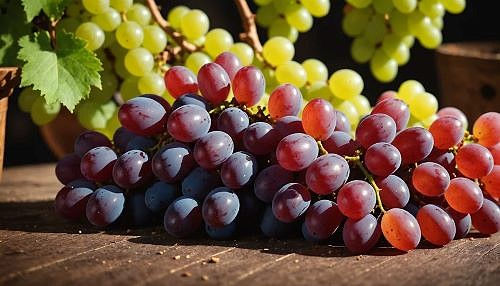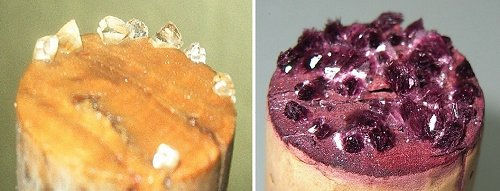Wine Making Process: Grape to Glass
- Sylvia Rose

- Feb 16
- 5 min read
Wine making starts with selecting the ripest grapes and follows through various stages of fermentation, aging and bottling. Here's an overview of the winemaking process from harvest to table.

1. The Harvest
Wine making process begins with the harvest, careful picking of ripe grapes. Winemakers meticulously monitor sugar levels, acidity, and tannin development to determine the perfect moment for harvest.
This is where the terroir, the unique combination of soil, climate, and topography, truly shines. Grapes must be picked at just the right moment when sugars balance perfectly with acidity, defining the wine's quality.

Harvesting methods vary. For premium wines, hand-harvesting is often preferred. Harvesters selectively pick only the best grapes. In Bordeaux, France, harvesters make multiple trips to get the ripest grapes.
In regions like Champagne, grapes are also hand-picked. This helps preserve integrity of the fruit and prevents premature crushing, which can release unwanted tannins.
Machine harvesting is faster and cheaper but can damage the unripened grapes.

2. Crushing and Pressing: Releasing the Juice
Once harvested, the grapes are transported to the winery for crushing and pressing. The goal is to extract the juice while separating it from the skins, seeds, and stems. Traditionally, this is done by foot.
Some wineries still crush grapes by foot. This method, called "pigeage," is popular in Rioja, Spain.
Today, most wineries use mechanical crushers to gently break the grape skins, releasing the juice or "must." Next comes the pressing, whereby the juice is separated from skins and seeds.

Different types of presses exist, from the traditional basket press to modern pneumatic presses. The pressure applied during this stage influences the final product.
Lower pressure results in higher quality juice, while higher pressure can extract more tannins and color, ideal for red wines. A delicate white wine like Sauvignon Blanc needs a gentle press to avoid harsh flavors from skins.
The resulting juice varies widely. Red wines are usually fermented with the skins to extract color and flavor, while white wines are typically pressed to separate the juice before fermentation.

3. Fermentation
In fermentation, yeast converts natural sugars in the grape juice to alcohol and carbon dioxide. It can be done using natural wild yeasts on the grapes or by adding cultured yeast for greater control.
The fermentation process can last anywhere from a few days to several weeks, depending on type of wine and desired alcohol level. Temperature stability is important during fermentation.

Winemakers monitor temperature and sugar levels. Some wines go through malolactic fermentation, a secondary fermentation. This softens the wine by converting sharp malic acid into softer lactic acid.
This technique is often used in Chardonnay production. It adds depth and complexity to the wine.
The sugar content in grapes can vary by as much as 25% based on the vineyard’s climate and soil composition. This variability significantly affects the alcohol content of the finished wine.

4. Aging and Maturation
After fermentation, the wine is aged and matured. The flavors develop, soften, and integrate. Wines can be aged in stainless steel tanks, oak barrels or even amphorae (clay vessels) for the ancient Greco-Roman touch.
Oak barrel aging imparts flavors of vanilla, spice, and toast to the wine. The type of oak, the level of toast, and the age of the barrel all contribute to the final flavor profile.

A bold Cabernet Sauvignon benefits from aging in new oak barrels to develop complexity and structure. Duration of aging varies from a few months to several years.
Light wines like Beaujolais Nouveau are made for early enjoyment and may be released weeks after harvest. Not all wines improve with long aging. Up to 70% of white wines are best consumed within a year or two of bottling.

5. Clarification and Stabilization: Preparing for Bottling
Before bottling, the wine undergoes clarification and stabilization. This process removes any unwanted particles and ensures the wine is stable and clear.
Clarification includes
Racking: transferring the wine from one vessel to another, leaving sediment behind.
Fining: adding substances like egg whites or bentonite clay to bind with particles
Filtration: passing the wine through a filter to remove any remaining solids.
Stabilization prevents unwanted changes in the wine after bottling, such as tartrate crystals forming or secondary fermentation occurring.

6. Bottling
As the aging period wraps up, it's time for bottling. Before this step, wines might be filtered and blended to achieve the perfect balance of flavors.
At this time winemakers decide whether to add sulfites. These preserve the wine and prevent oxidation. Sulfites are usually not the reason for red wine hangovers. Histamines and tannins are the ones who cause the suffering.

The closure used can influence the wine's aging potential. Corks remain the traditional choice, although screw caps are becoming increasingly popular, especially for wines meant to be consumed young.
After bottling, some wines may undergo further aging in the bottle. This allows the flavors to further integrate and soften.
For smaller producers, the bottling process can still be manual, ensuring minimal intervention and preserving the wine’s character. Corks allow a small amount of air in, good for aging, while screw caps keep wine fresh.

Non-Fiction Books:
Fiction Books:
READ: Lora Ley Adventures - Germanic Mythology Fiction Series
READ: Reiker For Hire - Victorian Detective Murder Mysteries


